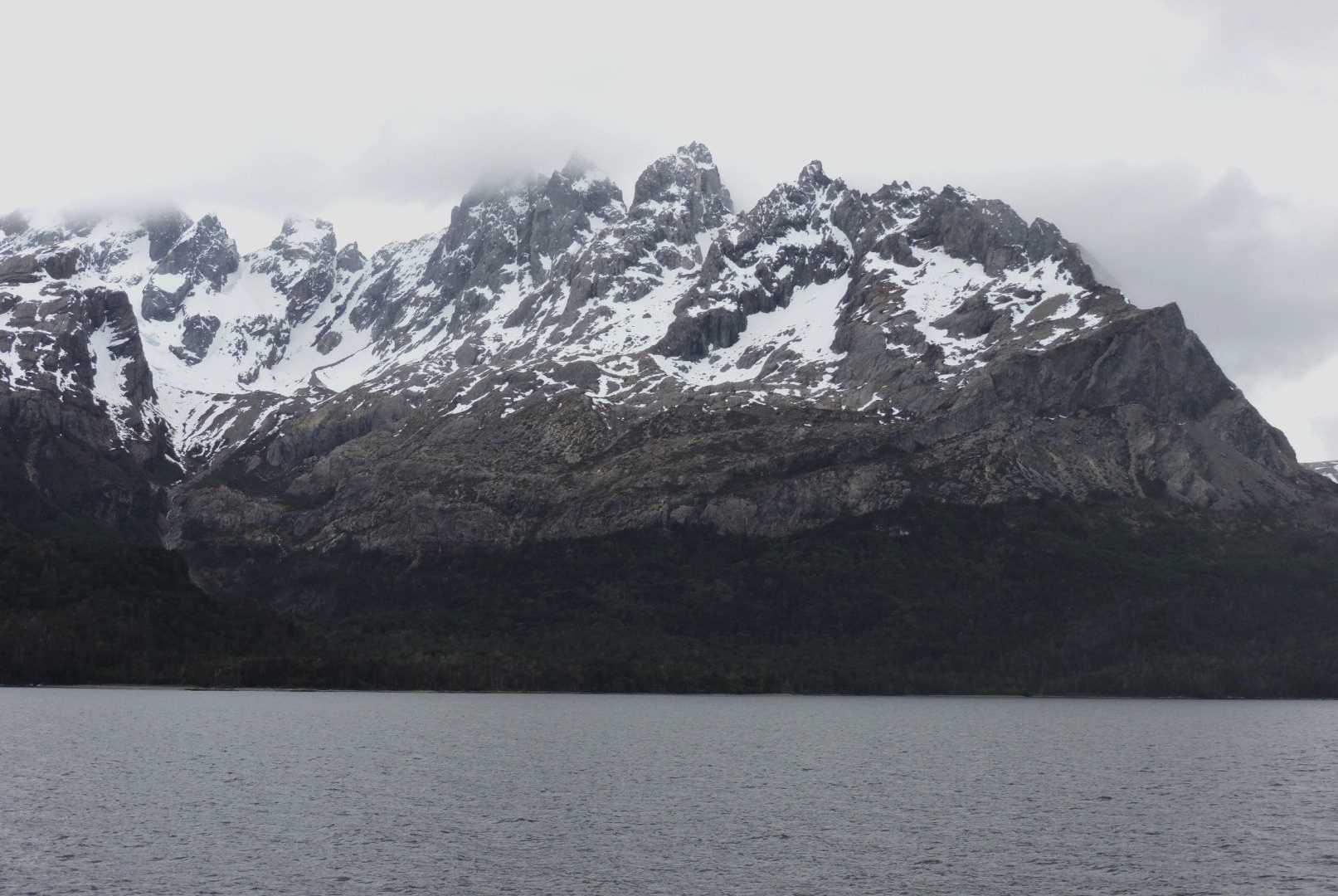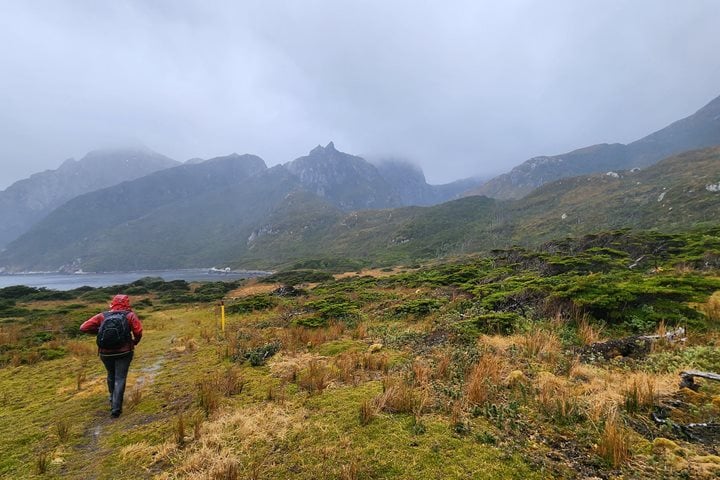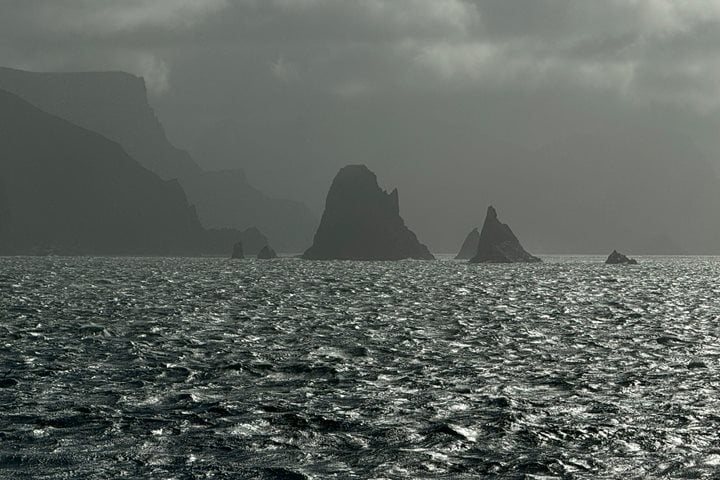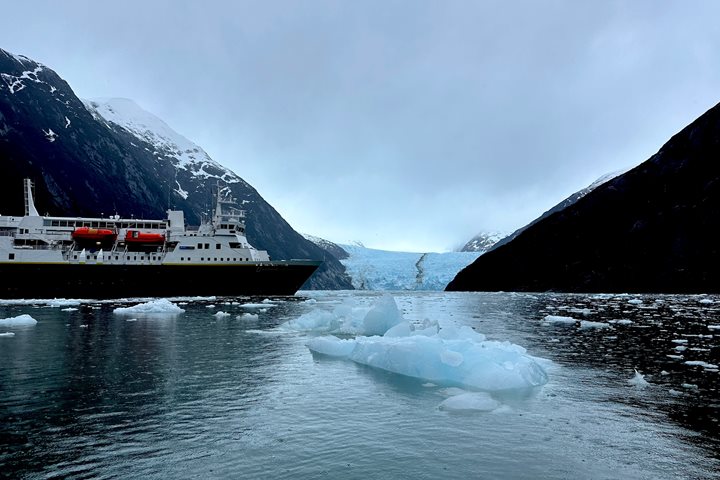During much of the night and part of the morning, we sailed through the western reaches of the
Conditions improved as we got into more protected waters in the late morning. The mountainous scenery is very impressive with obvious tree lines and snow lines. It is amazing how much vegetation exists in this rugged rocky environment. Much of the area is covered with thick growths of southern beech forests, often existing where one would think it impossible. These beech trees have the ability to grow in very thin soils and somehow hold onto the rocky substrate, in spite of devastating winds that can occur throughout the year.
Before lunch, we entered the western end of Seno (Fjord) Agostini and began making our way about 30 nautical miles (50 km) towards the head of the fjord. We could see numerous glaciers along the south side as we sailed deeper into the narrow waterway. Nearby mountains reach more than 3,300 feet (1,000 meters) on south side, and more than 6,600 feet (2,000 meters) on the north side. Our ship reached the head of Agostini Fjord, where we found the terminal end, or tongue, of an impressive terrestrial glacier. This active glacier showed a lot of beautiful deep blue colors within the crevasses near the shoreline. It is obvious that in the recent past, this was a tide water glacier, but now the ice face breaks off mostly along the shoreline. While the ship drifted (the water in this fjord is too deep for us to anchor), most of us went out on a Zodiac excursion to get close-up views of the floating brash ice and bergy bits and watch a continuous process of glacial calving in one area of the glacial face. An unexpected highlight of the excursion was the arrival of a large leopard seal swimming sleekly around the chunks of ice and occasionally approaching various Zodiacs for a closer look. We also admired the exposed shoreline walls of convoluted metamorphosed rock, with complex quartz intrusions crisscrossing throughout. There were numerous water cascades and water falls pouring down from the melting snow banks, and of course, rain runoff. It was no less scenic and impressive when we made our way out of Agostini Fjord, especially when we poked into a side fjord along the way.
Everyone seemed quite animated during our captain’s welcome cocktail party and dinner, which was a good indication of a successful day! The misty rain and intermittent gusty winds kept most people inside our warm and comfortable ship for the remainder of the evening.







